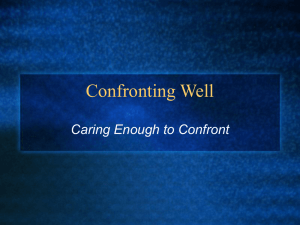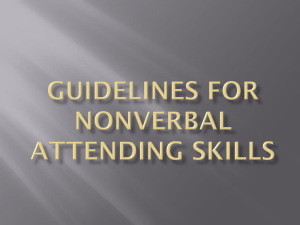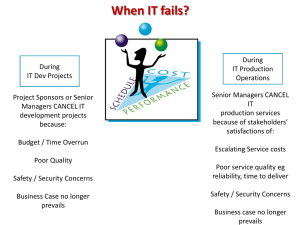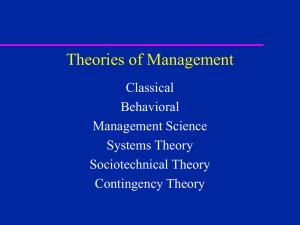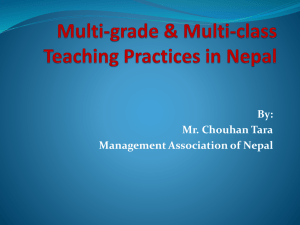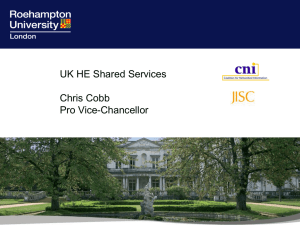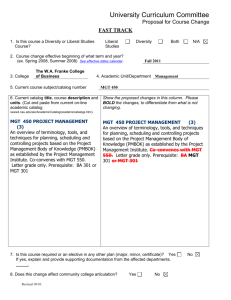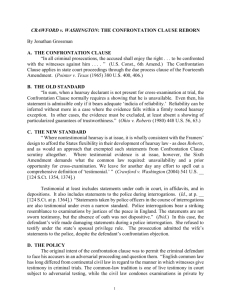pptx
advertisement
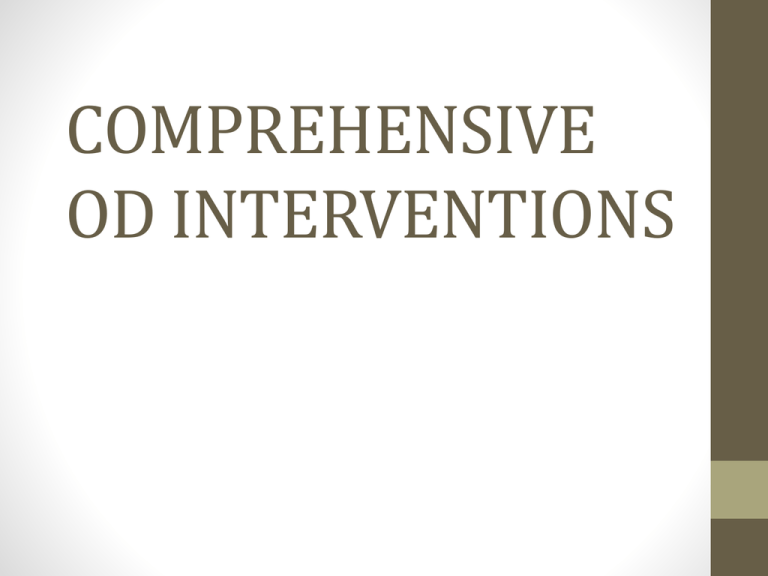
COMPREHENSIVE OD INTERVENTIONS INTRODUCTION • Comprehensive interventions are those in which the total organization is involved and depth of the cultural change Is addressed. • Phrases like “getting the whole system in the room” are appearing in greater OD practice. • Beckhard’s confrontation meeting and Strategic management activities involving top management, in the case of smaller organizations ,the entire management group like survey feedback is an important and widely used interventions for OD. Whole system can be described as• Managers of all of the functional areas in a business. • Representatives of top management, a cross section of employees from all levels, and supplier and customer representatives. • Directors of all of the social service agencies in a community. BECKHARD’S CONFRONTATION MEETING • The confrontation meeting is developed by Richard Beckhard, is a one day meeting of the entire management of an organization, in which they take a reading of their own organizational health. • In a series of activities, the mgt group generates information about its major problems, analyzes the underlying causes, develops action plans to correct the problems, and sets a schedule foe completed remedial work. • This intervention is an important one in OD. It is quick, simple, and reliable way in which to generate data about an organization and to set the action plans. Contd… The steps involved in confrontation meeting are as follows: 1. Climate setting (45-60 min). The top manager introduces the session by stating his or her goals for the meeting, citing the necessity for free and open discussion of issues and problems, and making it clear that individuals will not be punished for what they say. 2. Information collecting (1 hour). Small groups of 7-8 members are formed on the basis of heterogeneity of composition that is maximum mixture of people from different functional areas and working situations compose each team. The only rule is that bosses and subordinates cannot be put together on the same team. Contd.. 3. Information sharing (1 hour). Reporters from each small group reports the group’s complete findings to the total group, which are placed on newsprint on the walls. The total list of items is characterized usually by the meeting leader, into few major categories that may be based on type of problems (e.g.. Communication problems), type of relationships (e.g.. Troubles with top management), or type of area (e.g. problems with the accounting deptt.) Contd.. 4. Priority setting & Goal Action Planning (1 hour and 15 min.). This step typically follows a break during which time the items from the lists are duplicated for distribution to everyone. In a 15 min general session, the meeting leader goes to the list of items. The groups are asked to do three tasks. First they are to identify the problems they think should be the priority issues for top mgt. Second to find the solutions to the problems. Third, they are to determine how they will communicate the results of the confrontation meeting to their subordinates . This activity completes the confrontation meeting for all the managers except for the top mgt. group. Contd.. 5. Immediate follow up by top team (1 to 3 hours). The top mgt team meets the rest of the participants have left to plan the first follow-up actions steps and to determine what actions should be taken on the basis of what they have learned during the day. These follow up action plans are communicated to the rest of the mgt group within several days. 6. Progress Review (2 hours). A follow up meeting with the total mgt group is held 4-6 weeks later to the report progress and to review the actions resulting from the confrontation meeting. Strategic Management Activities • It is defined as the development and implementation of the organization’s grand design or overall strategy for relating to its current and future environmental demands. • The concept is described by Schendel and Hofers as- It comprises of six major tasks as: i. Goal Formulation- Defining Mission & purpose ii. Environmental analysis- SWOT Analysis iii. Strategy formulation iv. Strategy evaluation v. Strategy implementation vi. Strategic control Stream Analysis • Developed by Jerry Porras is a valuable model for thinking about change and for managing change. • It is a system for graphically displaying the problems of an organization, examining the interconnections between the problems, identifying core problems and graphically tracking the corrective actions taken to solve the problems. • Porras categorized organization work in four classesa) Organizing arrangements- goals, structure, policies etc. b) Social factors- Culture, mgt style, interaction process etc. c) Technology- tools, equipment, job design, technical systems. d) Physical Setting- space configuration, physical ambience, interior design etc. Contd.. • A thorough diagnosis of the organization’s problems and barriers to effectiveness is performed via brainstorming sessions, interviews, questionnaires and other methods. • Each problem is categorized in one stream. • The interconnections between the problems are noted. Problems that have many interconnections are identified as core problem. • Action plans are developed to correct the core problems. • In stream analysis, OD programs change the work setting, which leads to organizational improvement. Survey Feedback • Collecting data about the system and feeding back the data for individuals and groups at all levels of the organization to analyze, interpret meanings, and design corrective action steps. • These are having two components- the use of Attitude Survey and the use of Feedback workshops. • Survey feedback has been shown to be an effective change technique in OD. • A well designed survey helps organization members to develop valid models of how organizations work and also provide feedback about progress towards goals. Steps of Optimal survey • Organization members at the top of the hierarchy are involved in the preliminary planning. • Data are collected from all organizations. • Data are fed back to the top executive team and then down through the hierarchy is functional teams. • Each superior presides at a meeting with their subordinates in which the data are discussed. • Most feedback meetings include a consultant who has helped prepare the superior for the meeting and who serves as a resource person. Grid Organizational Development • Designed by Robert R. Blake and Jane S. Mouton. • Six phase program lasting about 3-5 years. • An organization can move systematically from the stage of examining managerial behavior and style to the development and implementation of an ideal strategic corporate model. • It enable individuals and groups to assess their own strengths and weaknesses. • Based on two dimensiona) Concern for people b) Concern for production Phases in Grid OD Phase 1: The Managerial Grid- Grid seminar is conducted by the company manager. Attention is given to assessing an individual’s managerial styles; problem solving; and communication skills etc. Phase 2: Teamwork Development- The goal is perfecting teamwork in the organization through analysis of team culture, traditions etc.. Feedback given to each manager about their individual team behavior . Phase 3: Intergroup Development- The goal is to move groups from their ineffective ways towards an ideal model. The phase includes building operational plans for moving the two groups. Cont.. • Phase 4: developing an ideal strategic corporate model- the focus shifts to corporate planning. Top management design an ideal strategic corporate model that would define what the corporation would be like. • Phase 5: Implementing the Ideal Strategic Model- the organization implement the model developed in phase 4. Each component appoints a planning team whose job is to examine every phase of the component’s operation . After the planning and assessment steps are completed, conversion of the organization to the ideal condition is implemented. • Phase 6: Systematic Critique- Systematic critiquing, measuring, and evaluating lead to knowledge of what progress has been made, what barriers still exist and must be overcome. Large scale change and High Performance systems • When a number of OD and other interventions are combined to create major changes in the total culture of an organization, the term large scale is used. • The creation of high-performance systems, highperformance organizations, high- involvement organizations, or self designing organizations- usually involve a broad array of interventions, and typically extensive member participation and involvement. • Changes in areas as job design and work flow, staffing procedures, training, and compensation are usually combined with such interventions.
